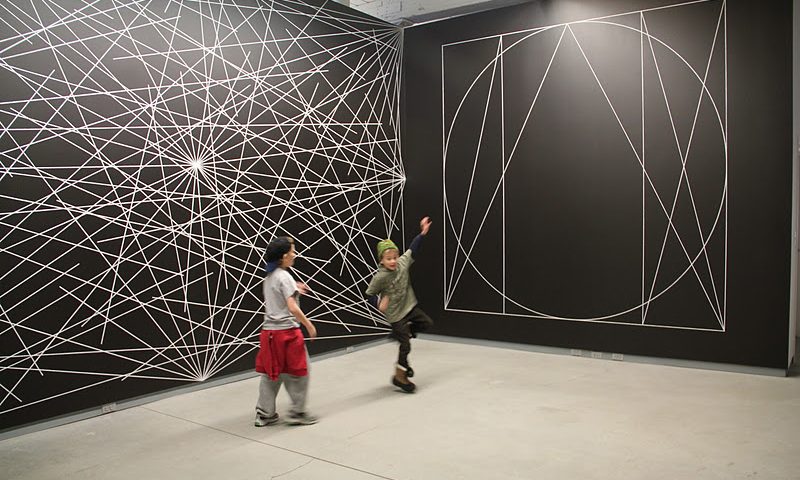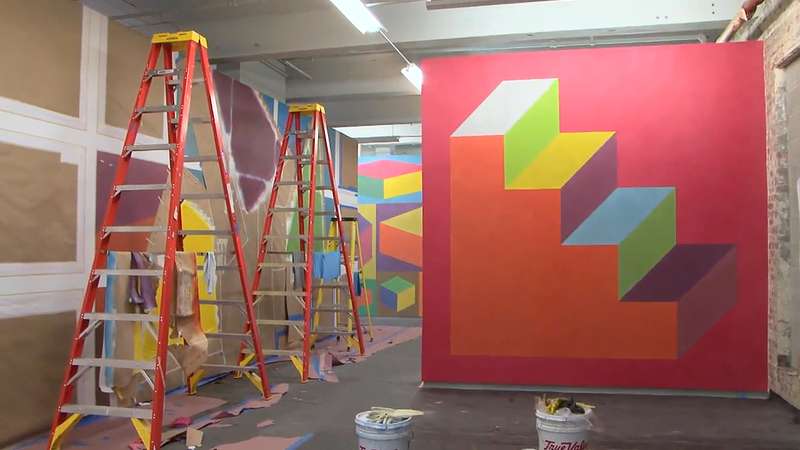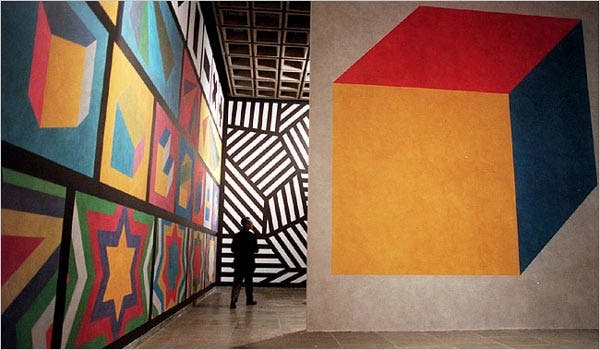
Sol LeWitt was a founding member of both minimalism and conceptual art. He was born in Hartford, Connecticut and got a BFA at Syracuse University. He served in the United States Army in Korea for a couple years and then afterwards he moved to New York in the early 1950s. He took graphic design and illustration classes and worked for several magazines. He began creating two and three dimensional works using the cube, varying its form through systems based on mathematics, language and other structures. LeWitt began exhibiting his work regularly as a leader among an emerging group of Minimalist artists. His works included sculptures based on the cube, and his late 1960s “wall drawings,” in which he drew lines in pencil along gallery walls, first in verticals and horizontals, and later in complex structures of arcs and circles, painted in colour with the help of assistants.

Many of his works were composed of simple geometric sculptures, drawings primary colours and jazzy patterns. He reduced art to a few of the most basic shapes, ( spheres, triangles), colours (red, yellow, blue, black) and types of lines, and organized them by guidelines he felt in the end free to bend.


